Japan’s OECM and related policy

Japan’s OECM and related policy - Nationally Certified Sustainably Managed Natural Sites -
Background
In December 2022, a new global framework, “the Kunming-Montreal Global Biodiversity Framework,” was adopted. Japan has also revisited its National Biodiversity Strategy and Action Plan, setting the goal of realizing, “nature-positive”※1 by 2030 and in order to do this, the “30by30 target” in effectively conserving at least 30% of land and sea areas as healthy ecosystems by 2030. To achieve these, it is necessary to expand protected areas such as national parks, as well as promote the establishment of OECMs.※2
In Addition, the importance of biodiversity and natural capital is increasing in corporate management, coupled with the trend toward the TNFD (the Taskforce on Nature-related Financial Disclosures).
More information on Japan’s 30by30, please check here 3030emap.pdf
※1 Halting and reversing biodiversity loss to put nature on a path to recovery
※2 Other Effective area-based Conservation Measures
In Addition, the importance of biodiversity and natural capital is increasing in corporate management, coupled with the trend toward the TNFD (the Taskforce on Nature-related Financial Disclosures).
More information on Japan’s 30by30, please check here 3030emap.pdf
※1 Halting and reversing biodiversity loss to put nature on a path to recovery
※2 Other Effective area-based Conservation Measures
30by30 Alliance for Biodiversity
The 30by30 Alliance for Biodiversity, a multi-stakeholder platform, was launched aims to strengthen its member‘s area-based conservation activities and disseminate leading examples contributing to the 30by30 target. As of March 2025 more than 1000 organizations from various sectors (such as companies, local governments and NGOs) have joined the Alliance, and the number is growing.
The platform members work together to achieve the 30by30 target. Members who own their lands will pursue certifying their lands as OECMs and expanding protected areas within their lands. Members who do not own their lands will support these efforts.
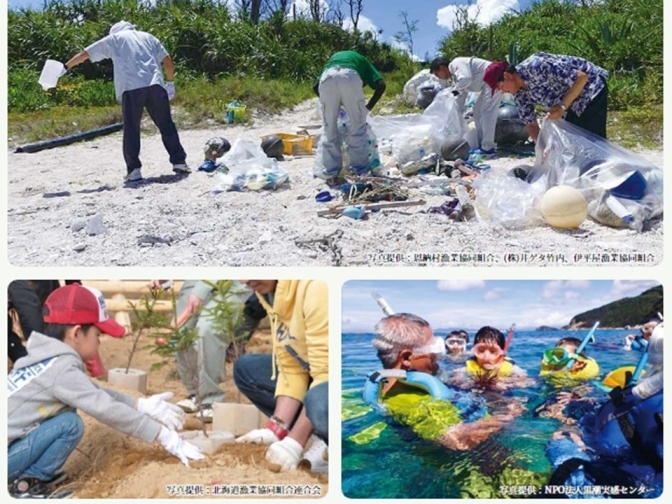
The platform members work together to achieve the 30by30 target. Members who own their lands will pursue certifying their lands as OECMs and expanding protected areas within their lands. Members who do not own their lands will support these efforts.

Nationally Certified Sustainably Managed Natural Sites
To achieve 30by30 we have introduced a flexible scheme of OECMs that enables wider opportunities of engagement for a broader range of stake holders. In that scheme we have certified “Nationally Certified Sustainably Managed Natural Sites” that contribute to biodiversity conservation through activities by companies, local governments and NGOs, etc. We conducted a trial certification scheme in 2022 and started the full operation of the scheme in 2023. 328 sites have been certified as of March 2025.
These areas which do not overlap with protected areas are registered on the World Database as OECMs.
As of March 2025, 159 sites are recorded on the WD-OECM, and 123 sites are under validation process.
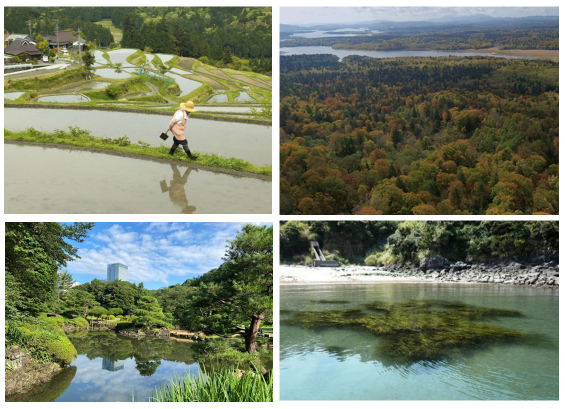
These areas which do not overlap with protected areas are registered on the World Database as OECMs.
As of March 2025, 159 sites are recorded on the WD-OECM, and 123 sites are under validation process.

1. Act on Promoting Activities to Enhance Regional Biodiversity
Recently, biodiversity and natural capital have become increasingly important in the management of companies, in conjunction with the focus on the TNFD. In fact, we have received many more applications than we had expected for the “Nationally Certified Sustainably Managed Natural Sites,” and there is a great deal of interest in biodiversity conservation in Japan, especially among companies.
To further accelerate this momentum, it was necessary to ensure the stability and continuity of the certification system. In addition, while the existing system has been targeted sites that already have rich biodiversity, it is also necessary to restore and create biodiversity in degraded ecosystems or previously developed sites in order to realize Nature Positive.
Against this background, we legislate the existing certification system, and “the Act on Promoting Activities to Enhance Regional Biodiversity” is enacted to further promote the activities of companies and other entities.
Overview of the Act on Promoting Activities to Enhance Regional Biodiversity, please check here 905R629.pdf
Promote activities to enhance biodiversity※3 in the region
(1) Establish a certification system for enhancement activity implementation plans※4
① Companies, etc. will prepare “Enhancement activity implementation plans” that contribute to the maintenance, restoration, and creation of biodiversity, such as the conservation of satochi-satoyama, the control of invasive alien species, and the conservation of endangered species, and these will be certified by the competent minister (companies, etc. could use the plans for information disclosure, etc.)
② The activities that municipalities carry out in cooperation with various local entities as coordinators are certified by the competent minister as “Collaborative enhancement activity implementation plans.”
The scope of the act is:
A. Activities to maintain the high biodiversity conservation value
→ These sites have high biodiversity conservation values that meet the criteria of OECM
B. Restoration or creation activities in degraded ecosystems or previously developed sites
→ Through the implementation of the activity plans, these sites are assumed to have high biodiversity conservation values
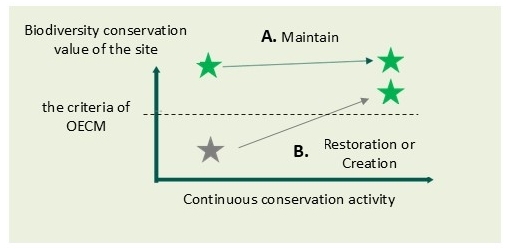
The sites where certified activities are implemented are called “Nationally Certified Sustainably Managed Natural Sites”.
(2) Establish an agreement system
Those municipalities, etc. certified as ② may enter “biodiversity maintenance agreements” with landowners, etc. so that they may implement the activities on a long-term, more stable basis.
※3 "Enhance biodiversity" means to maintain, restore, or create biodiversity in this act.
※4 Enhancement activity plans
In the enhancement activity plan, goals as ecological status to be achieved should be set based on the current ecological status and issues at each site. And the plan of activities necessary to achieve the goals are described.

To further accelerate this momentum, it was necessary to ensure the stability and continuity of the certification system. In addition, while the existing system has been targeted sites that already have rich biodiversity, it is also necessary to restore and create biodiversity in degraded ecosystems or previously developed sites in order to realize Nature Positive.
Against this background, we legislate the existing certification system, and “the Act on Promoting Activities to Enhance Regional Biodiversity” is enacted to further promote the activities of companies and other entities.
Overview of the Act on Promoting Activities to Enhance Regional Biodiversity, please check here 905R629.pdf
Promote activities to enhance biodiversity※3 in the region
(1) Establish a certification system for enhancement activity implementation plans※4
① Companies, etc. will prepare “Enhancement activity implementation plans” that contribute to the maintenance, restoration, and creation of biodiversity, such as the conservation of satochi-satoyama, the control of invasive alien species, and the conservation of endangered species, and these will be certified by the competent minister (companies, etc. could use the plans for information disclosure, etc.)
② The activities that municipalities carry out in cooperation with various local entities as coordinators are certified by the competent minister as “Collaborative enhancement activity implementation plans.”
The scope of the act is:
A. Activities to maintain the high biodiversity conservation value
→ These sites have high biodiversity conservation values that meet the criteria of OECM
B. Restoration or creation activities in degraded ecosystems or previously developed sites
→ Through the implementation of the activity plans, these sites are assumed to have high biodiversity conservation values

The sites where certified activities are implemented are called “Nationally Certified Sustainably Managed Natural Sites”.
(2) Establish an agreement system
Those municipalities, etc. certified as ② may enter “biodiversity maintenance agreements” with landowners, etc. so that they may implement the activities on a long-term, more stable basis.
※3 "Enhance biodiversity" means to maintain, restore, or create biodiversity in this act.
※4 Enhancement activity plans
In the enhancement activity plan, goals as ecological status to be achieved should be set based on the current ecological status and issues at each site. And the plan of activities necessary to achieve the goals are described.

2. Process of the Scheme
(1) Optional prior consultation with the agency※5 or the regional of Ministry of the Environment (MOE)
(2) Application by the authority of the conservation activity
(3) Preliminary screening review conducted by the agency.
(4) (If necessary, a site survey will be conducted.)
(5) Expert review by the group of experts in various fields related to biodiversity
(6) Final confirmation by the Competent Minister※6
(7) Certification by the Competent Minister
(8) Renewal procedure is envisaged approximately 5 years after certification, to guarantee nature conservation. And the results of biodiversity monitoring will be submitted approximately every 5 years after certification.
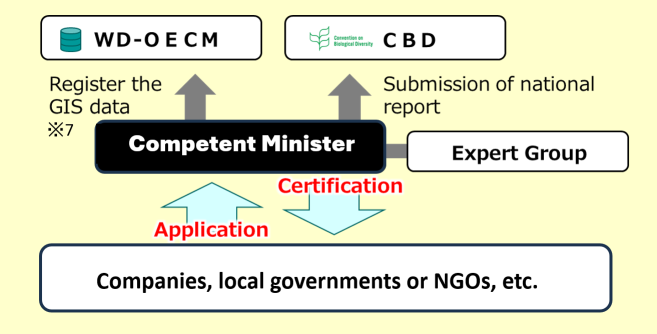

※5 The Environmental Restoration and Conservation Agency conducts a part of the certification-related work and provide information, etc
※6 Minister of the Environment; Minister of Agriculture, Forestry and Fisheries; Minister of Land, Infrastructure, Transport and Tourism
※7 Only sites where the activities are undertaken to maintain the high biodiversity value can be registered as WD-OCEM.
※6 Minister of the Environment; Minister of Agriculture, Forestry and Fisheries; Minister of Land, Infrastructure, Transport and Tourism
※7 Only sites where the activities are undertaken to maintain the high biodiversity value can be registered as WD-OCEM.
3. Criteria for certifying ”Nationally Certified Sustainably Managed Natural Sites”
The IUCN methodology forms the backbone of the criteria of ”Nationally Certified Sustainably Managed Natural Sites”. The structure of the criteria was reflected, and the components were referred to from the IUCN guideline, while some adjustments were made to better adapt to Japanese national context. The adaption was supported by the national expert meetings where experts discussed criteria that would match the nature and culture of Japan.
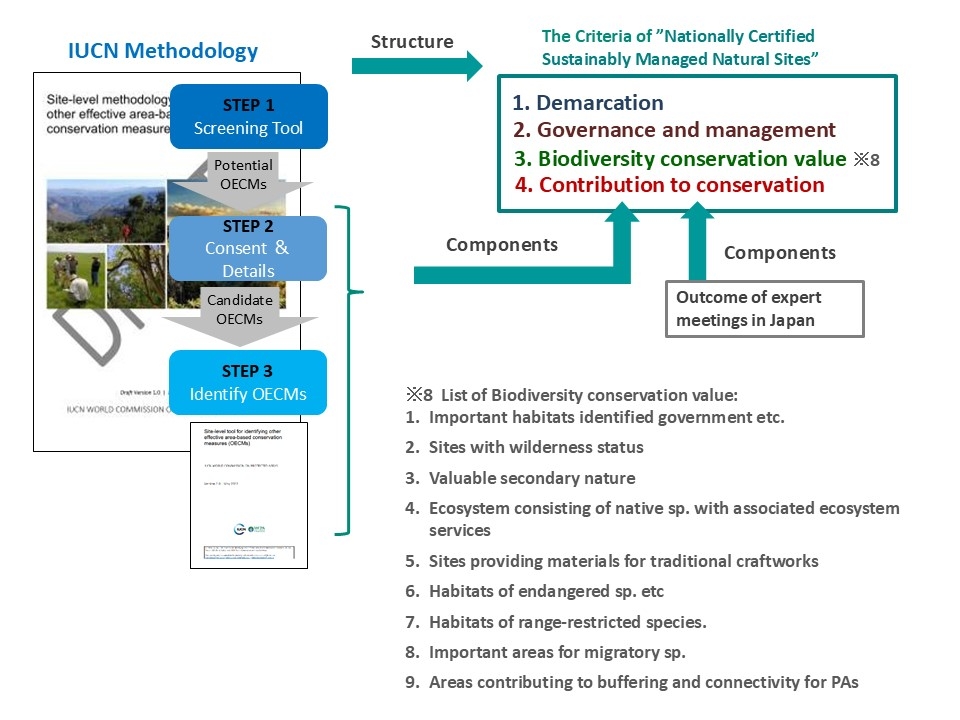
Required information in the enhancement activity implementation plans and outline of certification criteria
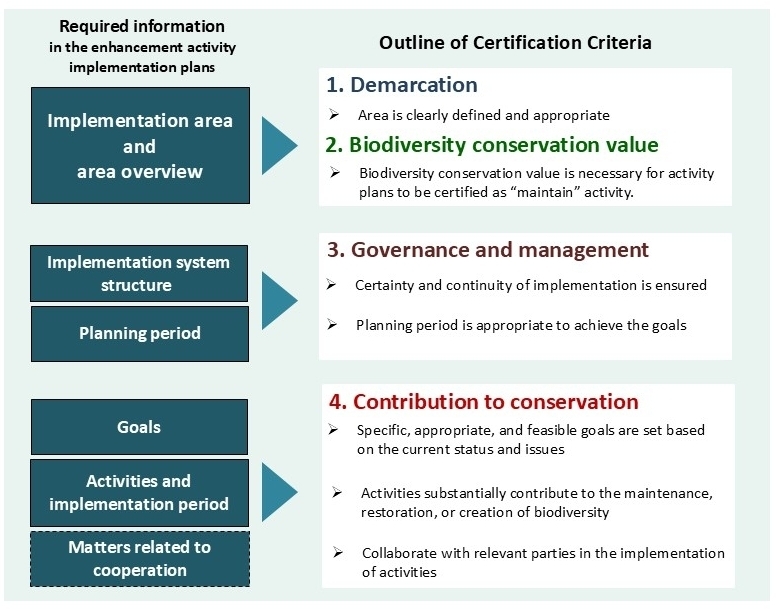

Required information in the enhancement activity implementation plans and outline of certification criteria

Certificate Scheme of Support for Japan’s OECMs
Japan has established the Certificate Scheme of Support for Japan’s OECMs. Through this system, supporters can obtain a "Certificate of Support for OECMs" when they offer human, material, or financial support for biodiversity conservation activities in “Nationally Certified Sustainably Managed Natural Sites”.
We began our pilot test phase in 2024. We will start the full operation in 2025. We anticipate that the certificates will be harnessed for disclosure of the supporters such as the TNFD, Investor relations.
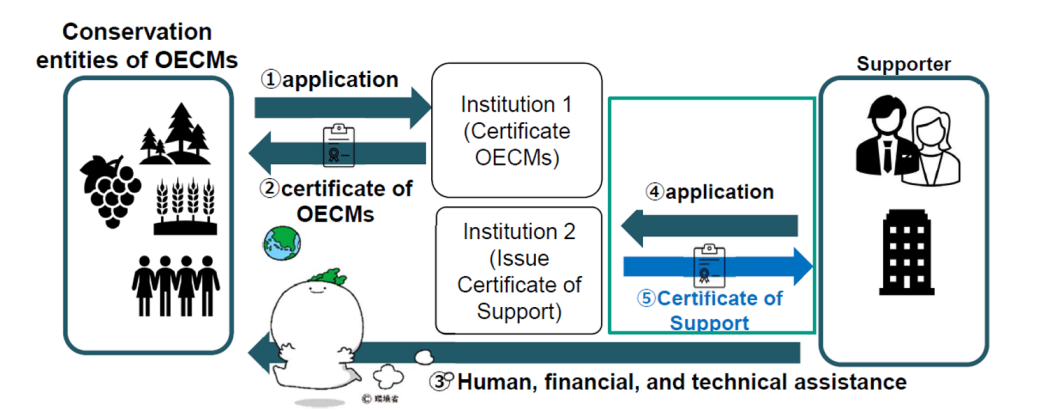
We began our pilot test phase in 2024. We will start the full operation in 2025. We anticipate that the certificates will be harnessed for disclosure of the supporters such as the TNFD, Investor relations.
